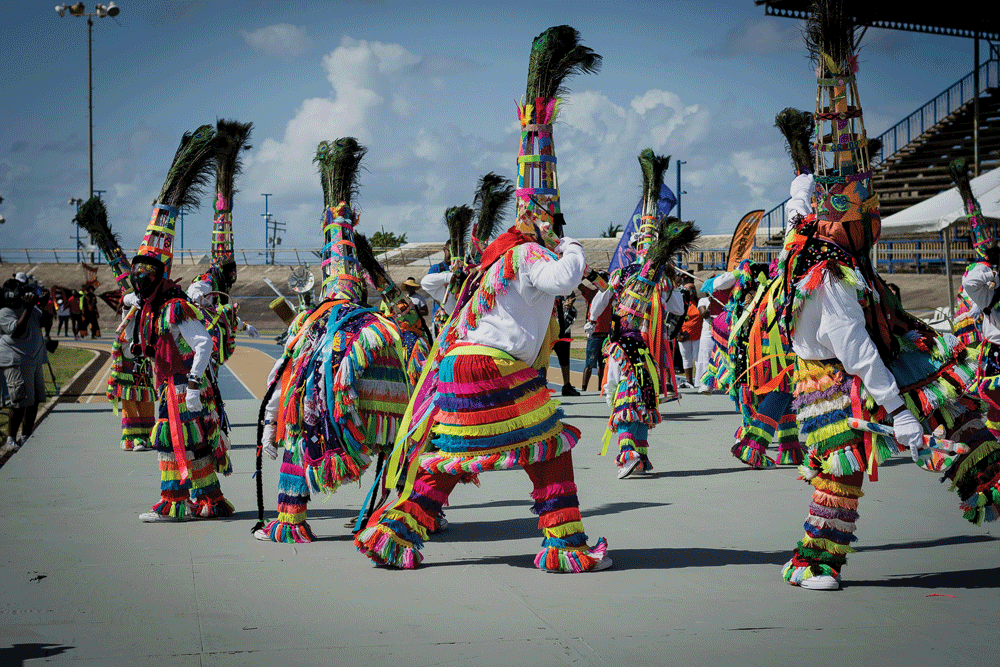
African Diaspora in Barbados
Transatlantic Slave Trade In Barbados
Just like other parts in the world Barbados was also using the acts of the Transatlantic Slave Trade. The slaves were being used in different ways and the slave trade was linked Barbados to Britain/ Europe. Differences in gender was something that happened in Barbados when it came to slaves. For example since "there was more women than men this made it easier for reproduction in the second half of the eighteenth century" ( Found in http://www.bbc.co.uk/history/british/empire_seapower/barbados_01.shtml). Not only were they used as a way to reproduce but they were also without any type of honor but the slaved men had a little more than them. This shows how the gender differences was more difficult for female slaves.

Barbados was linked to west Africa and Britain/Europe, which are the places of where the slave trades started to happen.. When Britain abolished the slave trade, 375,000 slaves landed in their shores. After the slaves were in Barbados a shift occurred because the majority of the white population changed to a majority of black population. This made the white population be unsure of their place in case if a rebellion occurred. For example "Plantation owners were afraid of a slave rebellion... causing them to leave" (found in “The Slave History of Barbados” in http://www.funbarbados.com/ourisland/history/slavery.cfm ). This shows how slavery in Barbados changed do to the actions they had taken of the population.

Resistance to Slavery in Barbados
Resisting to slavery was a something that happened in many ways in Barbados. The way that Barbados slaves were resistant to slavery is when they started to plan to rebel during the 1600’s, there was three unsuccessful rebellions in Barbados in the years of 1649, 1675 and 1692. For example in the article “The Slave History of Barbados” (found in http://www.funbarbados.com/ourisland/history/slavery.cfm ) it says, “The First Slave Rebellion(1649) This included two plantations, and the trigger was insufficient food. It was quickly subdued with not much damage. The Second Slave Rebellion (1675)This one was island-wide and took over three years to plan but was uncovered when a one of the slaves named Fortuna leaked the information out. Over 100 slaves were arrested and tortured, while over 40 were executed after being found guilty of rebellion. Some committed suicide before being executed, while others were beheaded or burnt alive.The Third Slave Rebellion (1692)This was also island-wide with over 200 slaves arrested and over 90 executed after being found guilty of rebellion.”. This shows the many ways that the slaves tried to resist/rebel to slavery in Barbados.

But because of the armed force the slave rebellions were unsuccessful. The biggest rebellion happened in 1816 but was still controlled after. For example in the article of “The National Archives” (found in http://www.nationalarchives.gov.uk/education/resources/bussas-rebellion/ ) it says, “Slave rebellions tended to be less threatening in Barbados than on other Caribbean islands. Barbados had a well-armed police force and there was nowhere to hide...On Sunday 14 April 1816 a major rebellion broke out in Barbados. This rebellion was carefully planned and organised by the senior enslaved men and women who worked on several estates and plantations... Three days later it was put down by the local military.. Martial law (army rule) was declared on Monday 15 April, and was lifted on 12 July.” This shows how even though slaves made plans it could still be handled by the well-armed soldiers throughout that time.
Barbados Today
Barbados throughout time has changed in many ways from culture and traditions and arts that represent the difficulties the slaves faced before. Culture has been one of the main things that have changed throughout Barbados do to the fact that the African population started to grow and their music and arts were continuing to spread with others. The people from Barbados were learning the cultures and traditions and that is how it started to grow. For example in the article “African Influences in Barbadian Culture” (found in https://africanholocaust.net/african-influences-barbados/ ) it says, “All of these art forms and artistic practices were brought by Africans to this island. Women from Africa, these women came from Barbados in large numbers and were equally engaged in work on the plantation. Women brought with them almost all of the arts which they have today.”. This shows how culture in music and dances and art have evolved throughout time in Barbados and is now being learned and done by others.

African Diaspora is used to describe the massive separation of people from Africa during the Transatlantic Slave Trades. Something that people from Barbados have that remind them about it and how they fought for freedom is the statue of Bussa. In the article “Bussa Emancipation Statue” (found in https://alchetron.com/Bussa-Emancipation-Statue ) it says, “The Bussa Emancipation Statue is public sculpture of a slave rebellion leader in Barbados east of Bridgetown.” also, “signifying their freedom and happiness”. This statue is a big symbol of the Barbadians freedom because it brings them back to the biggest rebellion of slaves in Barbadian history.
